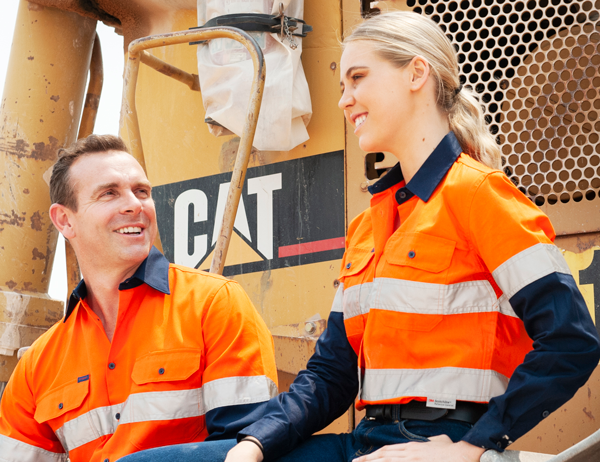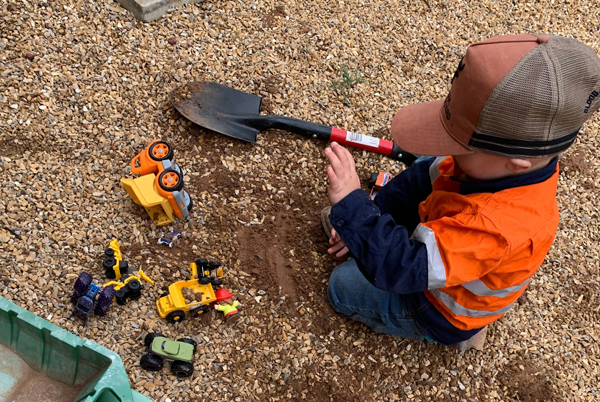What Hi-Vis Workwear is best for me?
Author: Amelia Phillips Date Posted:1 February 2023
 When it comes to workwear, it’s all about being as safe and as comfortable as possible. Staying safe on the worksite, in the cattle yards, or just going about your day-to-day activities is an absolute priority. This is where our range of Hi-Vis workwear comes in!
When it comes to workwear, it’s all about being as safe and as comfortable as possible. Staying safe on the worksite, in the cattle yards, or just going about your day-to-day activities is an absolute priority. This is where our range of Hi-Vis workwear comes in!But do you know which Hi-Vis workwear is best for your occupation? And with all of the colours, styles, and classifications available, where do you start?
Read on and we will break down the ever-confusing world of Hi-Vis for you and learn why making the right choice is so important.
Orange, Red, Yellow, Pink, Blue, Green, Two-tone… Which Hi-Vis is Best for you?
It may feel that for a long time the only high-visibility workwear available was in fluorescent yellow or orange, however, in recent years, a variety of colours has hit our shelves.
So what prompted the colour change? And is yellow or orange superior to the other Hi-Vis options available?
As a woman in the tradie business (home tradie stuff that is!) I’d like to think that this change may have been prompted by the increase of women working in trades. We like a bit of variety in our wardrobe and who wants to be restricted to only two colours? (not me!).
Having said that, unfortunately, I’m going to burst the colour choice bubble of those who love the new colours…. Yes, Orange, Orange-Red, and Yellow are superior. In fact, they are the only colours that meet Australian standards for hi-vis Day Time use safety clothing. While pink, blue, and even emerald green may stand out, they are not considered appropriate safety wear in and around most Australian worksites. Don't get me wrong, these are still great options to make you stand out, but most work sites will not deem them to be compliant. Standards are continually being reviewed, and the addition of reflector tape on many Hi-Vis lines may make them acceptable, just always make sure you check with your site supervisor before putting together your work outfit.
How to choose the best Hi-Vis garment for you?
The original Hi-Vis workwear concept is credited to American Bob Switzer, who, ironically, whilst recovering from a workplace injury, joined forces with his brother and conducted some scientific experiments with fluorescent chemicals onto fabric. If these fellas are to be believed, the first Hi-Vis garment was Bob’s wife’s wedding dress. After their apparent wedding dress success, the boys moved on to more appropriate workplace attire, and here we are today, talking about a garment that has undoubtedly saved countless hard-working Aussies from potentially tragic situations.
Hi-Vis workwear first and foremost was created to make you stand out from your environment – so the colour you choose will depend on where you are working. Often your employer will stipulate which colour you need to wear.
Orange and Yellow are the most commonly preferred options and they are used for a wide variety of occupations.
Who wears Orange?
Typically Orange is worn by construction workers and people on building sites as well as traffic controllers. Orange is strongly recognized as indicating a "warning" or "hazard". Orange is particularly worn in the daytime and contrasts the environments in which it is worn. For instance, blue sky, grey concrete, black bitumen, and more. There is no missing a bright orange shirt with that background scene.
Yellow Hi-Vis
Yellow is worn mostly at night due to its reflective qualities and the recognition that it triggers within the brain. If you are working at night this colour will keep you safe in emergency, outdoor, and construction environments. It can be seen from a distance of as much as 300 metres.
It must be noted that any Hi-Vis garment worn at night must have safety standard reflective tape attached. But we will go into that a bit more as you read on.
Pink, Green, and Blue Hi-Vis Clothing
Although not as widely available, pink, green, and blue Hi-Vis clothing has become more popular in recent years. But as we have already mentioned, these colours, unfortunately, do not meet Australian standards for Hi-Vis daytime workwear.
If you’re a tradie working independently in people’s homes, however, and you decide what you wear, these are a great option.
If you’re reading this blog with your worksite in mind, you may not have considered other everyday situations where hi-vis may potentially be a lifesaver.
Do you jog? Run? Walk the dog? Maybe early morning or in the evening?
Do you have Tiny Tradies who just want to have a shirt like yours?
How about kids running around on the farm? What better way to keep them in sight on-site, than with a hi-vis shirt with tape?
 Are you going camping? Put a hi-vis shirt with tape on those kids (and their Mum and Dad)! You’ll never lose them in the dark!
Are you going camping? Put a hi-vis shirt with tape on those kids (and their Mum and Dad)! You’ll never lose them in the dark!
On ski fields over a jacket, at the beach when you are being SunSmart (and trying to keep track of everyone), or riding bikes in the street….there are so many situations where you and your family can stay safer by donning a Hi-Vis top. Whether it's traditional yellow or orange or one of the newer colour styles - being seen makes sense!
I digress... Back to work.
Restrictions and Regulations
As we have already discussed, yellow and orange are really the only colours that will cut it in most work environments. This said it does come down to what you do and what the regulations are for your particular job. Hi-Vis classifications can be tricky to navigate. We have tried to simplify these classes in the table below.
Class D:
A garment designed for outdoor daytime use ONLY. It will provide good visibility for the wearer but isn’t great under artificial light sources. These will mostly be in Yellow, Orange, or Orange/Red for professional workplaces.
Class D may also apply to other colours such as bright blue, pink, and bright green, which offer a level of visibility in private/recreational settings. Always check your worksite policies for compliance.
Class N:
Night-time use ONLY. Can be any base colour as long as it has a reflective tape or other reflective quality. Standard reflective materials reflect light in multiple directions and not necessarily back to the original source of light for eg a headlight beam. These garments do not provide any protection during the day unless the base colour is fluorescent.
Class D/N:
Designed for daytime and night-time use where a Class F standard is not required.
Class F:
Outdoor daytime use and made with fluorescent materials. This means the colour pigment in the garment is of a high standard and has superior reflection qualities when light hits the garment. It provides a higher level of visual protection than Class D.
Class NF:
Non-fluorescent clothing. Here is where the good old work shirt comes along. Can be any colour, most commonly (and traditionally), in Navy, Khaki or black; sleeveless, short or long-sleeved. Check out our full range of everyday work shirts here.
Class R:
Made from retroreflective materials ie 3M tape, overgarments with a solid base colour.
The tape is positioned on the garment to provide maximum reflective exposure. The tape is arranged in horizontal hoops, an ‘X’ pattern or ‘H’ pattern, usually on the back of a shirt/vest/jacket, or around the legs of pants.
The retroreflective materials cause light to reflect directly back to the original source. For example a torch beam or car headlight. As a result, the torchbearer or car driver will be in direct sight of the person wearing the retro-reflective garment as their beam is directed straight back at them, providing a better visual presentation.
The base garment does not necessarily have to be a traditional Hi-Vis colour. They can be black, grey, pink, green….any colour that is in contrast to the reflective tape. Hence the reason they are only approved for night use only.
Class RF:
Retroreflective and fluorescent materials.
These garments provide maximum visibility day and night. They're a combination of Class R and Class F.
Make sure you are aware of the necessary classification you will need for your workwear.
It’s also important to be aware that workwear worn regularly often needs to be replaced every 6 months to ensure it stays up to standard and is visible when on site. Washing your gear regularly inevitably results in fading clothes, even sun exposure will fade garments.
A faded Hi Vis top won't keep anyone safe.
Like with any new job, make sure you are fully aware of the obligations and requirements of your worksite BEFORE your first day. Check out our full range of Hi-Vis gear and be ready for a big day on the job, whatever that may be!
Where do you wear your Hi-Vis gear? Let us know in the comments below.
Always check whether your safety gear meets current safety regulations for use in your employment. Hi-Vis gear on children, and adults for that matter, does not take the place of appropriate supervision or making good decisions and choices, that's all on you!

